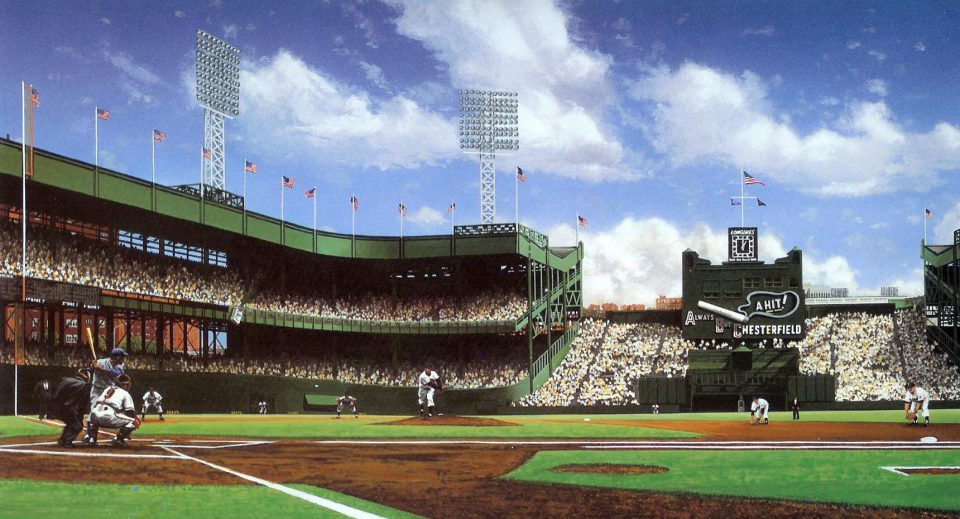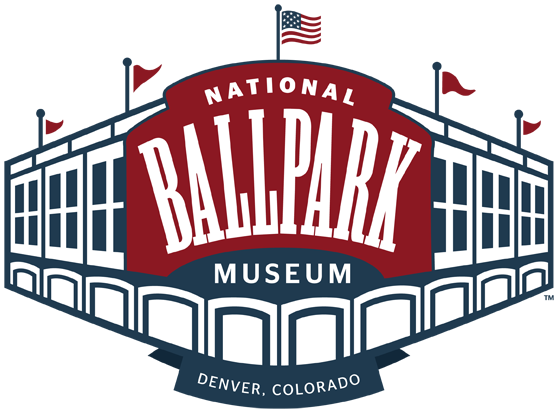
In the very early morning hours of Friday, April 14, 1911, a fire of uncertain origin swept through the stadium’s horseshoe-shaped grandstand, consuming wood and leaving only steel uprights in place. The gaps between some sections of the stands saved a good portion of the outfield seating and the clubhouse from destruction. Giants owner John T. Brush decided to rebuild the Polo Grounds with concrete and steel, renting Hilltop Park from the Highlanders during reconstruction.
Progress was sufficient to allow the stadium to reopen just three months later, June 28, 1911, the date some baseball guides date the structure. As configured, it was the ninth concrete-and-steel stadium in the Majors and fourth in the National League. Unfinished seating areas were rebuilt during the season while the games went on. The new structure stretched in roughly the same semicircle from the left field corner around home plate to the right field corner as prior but was extended into deep right-center field. The surviving wooden bleachers were retained basically as is, with gaps remaining on each side between the new fireproof construction.
The Giants rose from the ashes along with their ballpark, winning the National League pennant in 1911 (as they also would in 1912 and 1913). As evidenced from the World Series programs, the team renamed the new structure Brush Stadium in honor of their then-owner John T. Brush, but the name did not stick, and by the late 1910s it was passé. The remaining old bleachers were demolished during the 1923 season when the permanent double-deck was extended around most of the rest of the field and new bleachers and clubhouse were constructed across center field. This construction gave the stadium its familiar horseshoe or bathtub style shape, as well as a new nickname, “The Bathtub”. *
POLO GROUNDS FACTS #
- Originally named for owner John T. Brush.
- The phrase “Hot Dog” was coined by NY Journal sports cartoonist Tad Dorgan when he couldn’t remember how to spell the word “dachshund” in describing the “red hot dachshund sausages” served at a game here in April 1901.
- The Polo Grounds Towers (four 30-story apartment buildings) now stand where the field used to be. Willie Mays Field (an asphalt playground with 6 basketball backboards) is where center field used to be; a brass historical marker notes the spot.
- The outfield was slightly sunken. A manager, standing in his dugout, could see only the top half of his outfielders. At the wall, the field was 8 feet below the infield.
- Right-center wall sloped gradually from 11 feet at pole to 12 feet at the bleachers.
- Left-center wall sloped from 16 feet, 9.75 inches at the pole to 18 feet in left center, then abruptly fell to 16 feet and then to 14 feet and sloped gradually to 12 feet at the bleachers.
- Fred Merkle’s blunder occurred here on September 23, 1908, resulting in the infamous Cubs-Giants October 8, 1908 replay of the game.
- Morris Jumel Mansion, on Coogan’s Bluff, overlooked the ballpark.
- Coats of arms of all the teams in the National League were displayed on the top of the grandstand until they were removed in the 1920s.
- On August 16, 1920, Cleveland Indians shortstop Ray Chapman was hit in the head by a pitch thrown by the Yankees’ Carl Mays. At the time, batters did not wear helmets. Chapman died 12 hours after he was hit, on August 17. He remains the only player to die from an injury sustained in a major league baseball game.
- In the winter of 1922-23, the concrete double decks were extended all the way to either side of the new concrete bleachers in center, housing the clubhouse. Unfortunately, the Roman Coliseum facade frescoes were removed during that winter also.
- The bleachers in center were remodeled in 1923.
- Site of the All-Star game in 1942 and 1934.
- A 2-foot-square section of sod from center field was removed and taken to San Francisco (where the Giants moved to) in the fall of 1957.
- Home plate was moved out toward center several feet by the Mets in the winter of 1961-1962.
- In 1962 and 1963 the Howard Clothes sign on the outfield wall promised a suit to any player hitting it.
- Bobby Thomson’s “Shot Heard Round the World” homer occurred here at 4:11 PM on October 3, 1951 against the Dodgers and ended the “Greatest Game Ever Played.”
- Demolition started on April 10, 1964, using the same wrecking ball that had demolished Ebbets Field.
Read our ‘Stadium Seat Spiel’ Article on The Polo Grounds
*Source Wikipedia
#Source ballparks.com
BELOW ARE SOME OF THE ARTIFACTS FROM THE POLO GROUNDS IN THE MUSEUM – CLICK THE IMAGES FOR A LARGER VIEW
